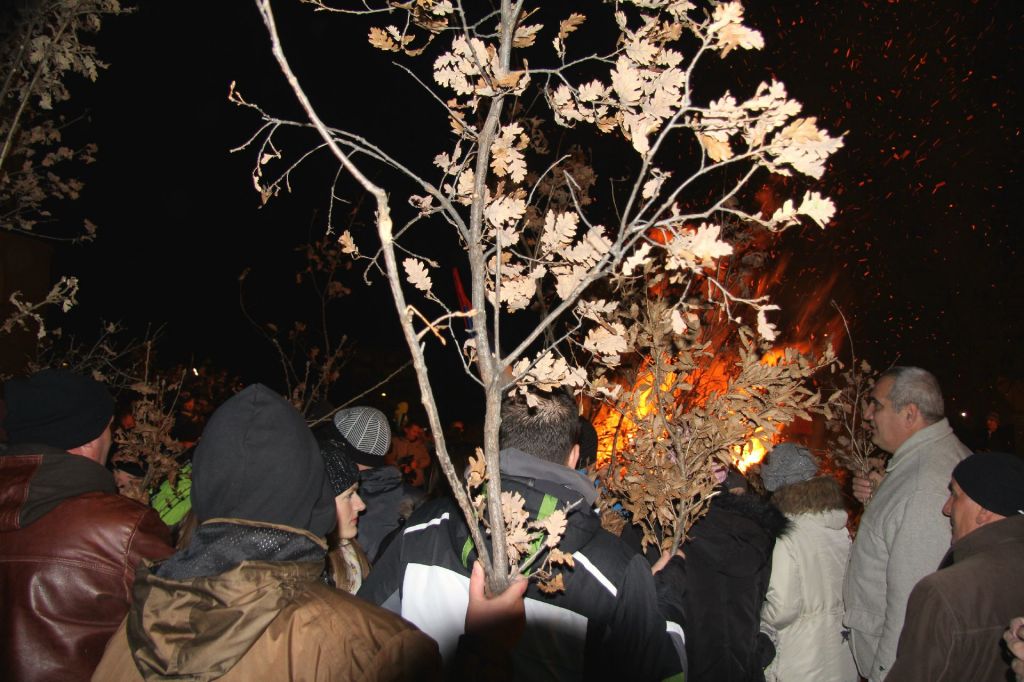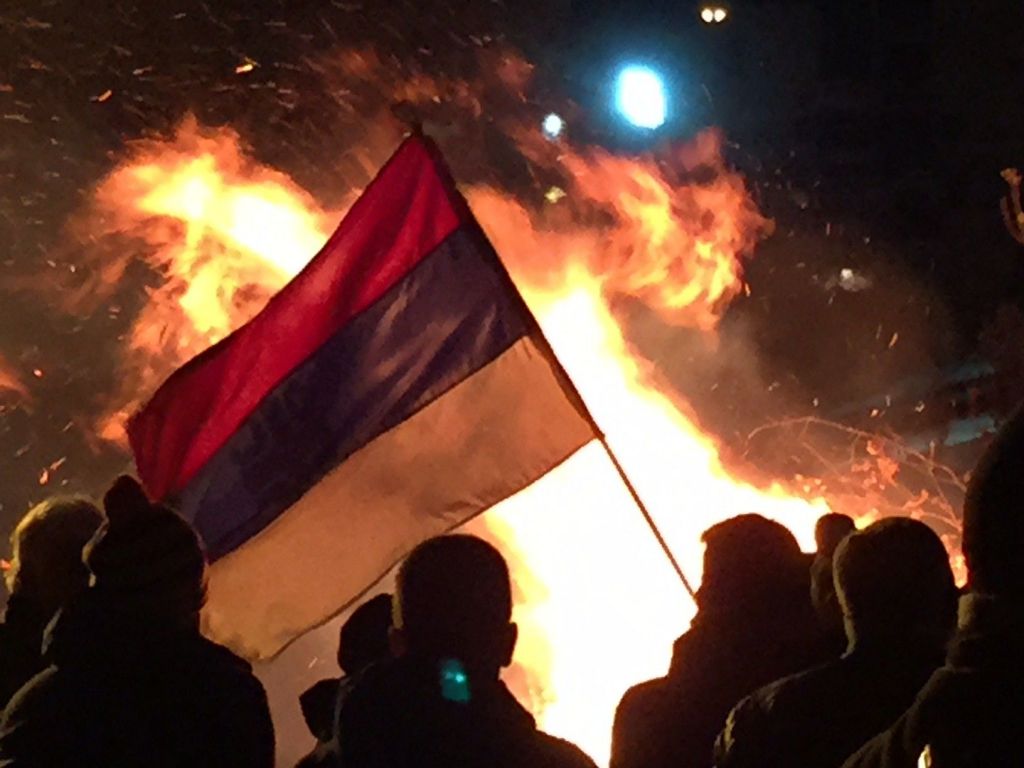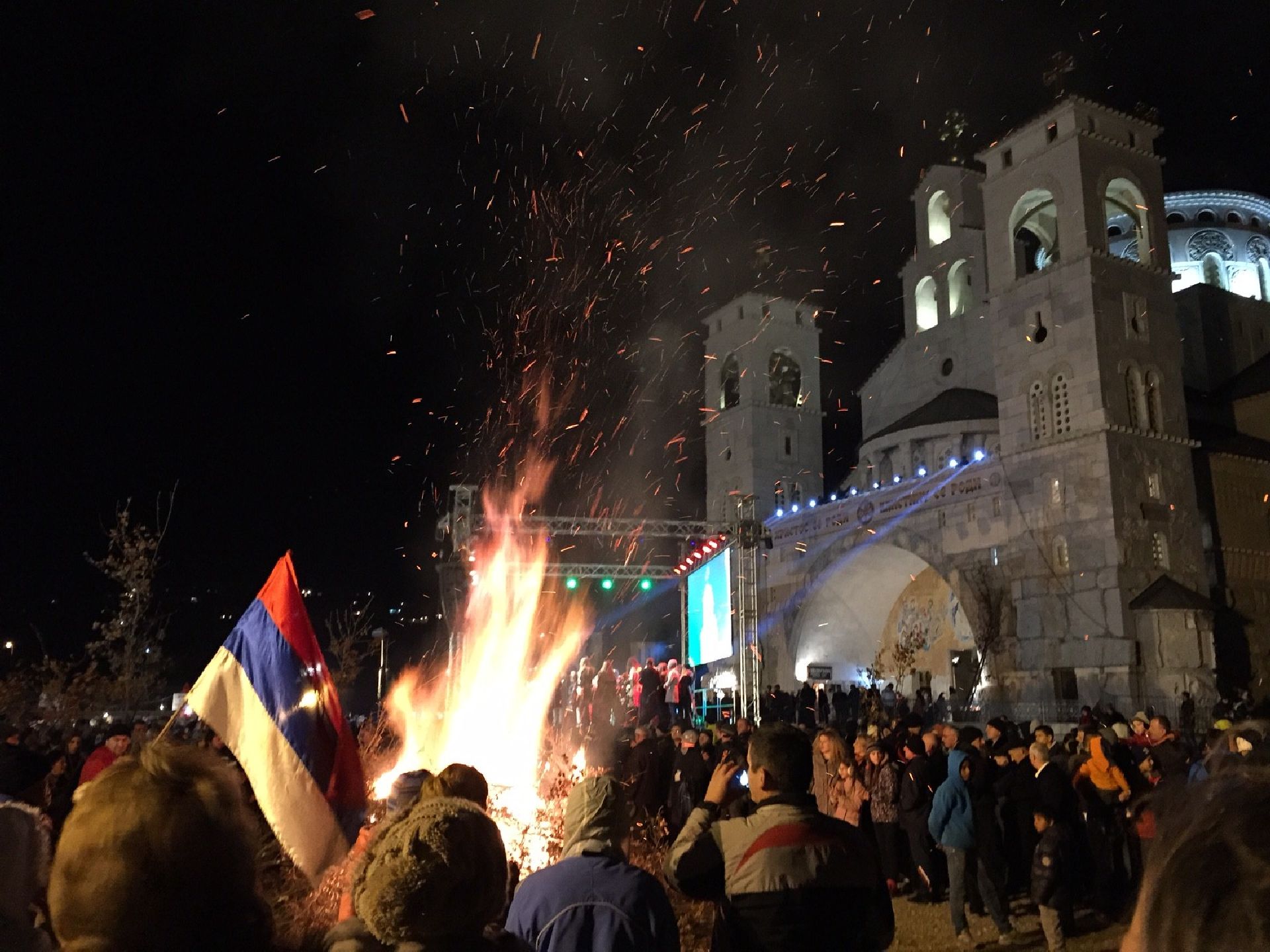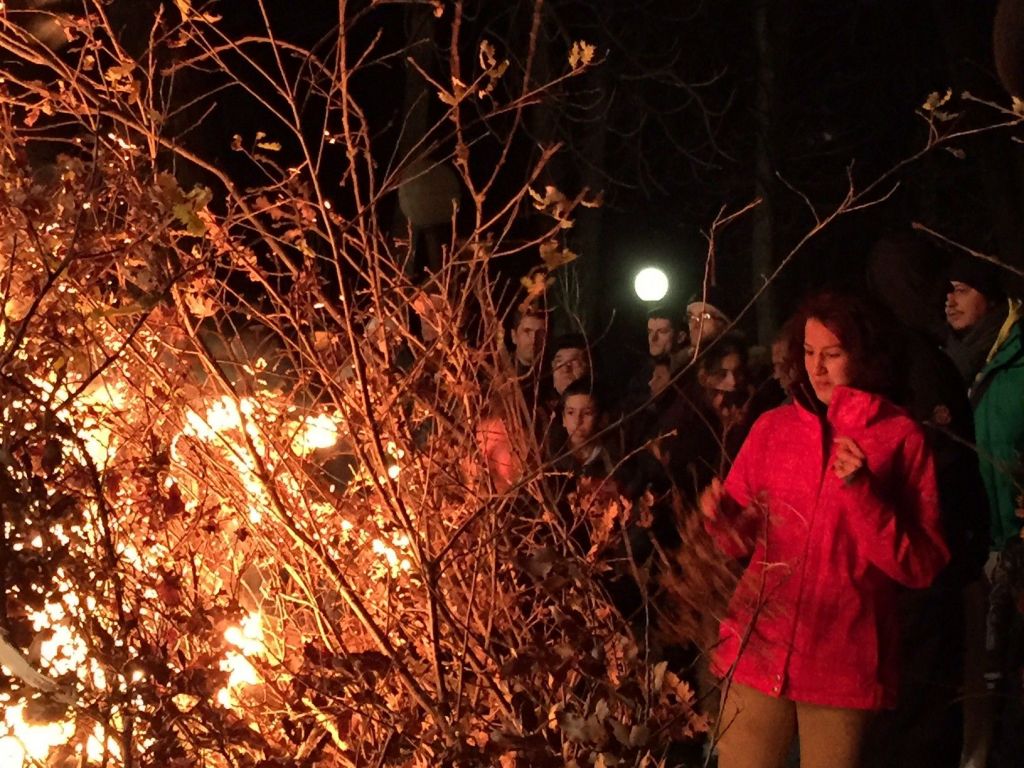 After having spent Christmas and New Year’s Eve in the Netherlands, we were eager to celebrate another Christmas in “our” city, Podgorica. The Orthodox Church still uses the old “Julian” Calendar, which means that Christmas Eve – in Montenegro called Badnji Dan – is on January 6th and Christmas Day (Božić) on January 7th.
After having spent Christmas and New Year’s Eve in the Netherlands, we were eager to celebrate another Christmas in “our” city, Podgorica. The Orthodox Church still uses the old “Julian” Calendar, which means that Christmas Eve – in Montenegro called Badnji Dan – is on January 6th and Christmas Day (Božić) on January 7th.
In former times, on the morning of Christmas Eve, the father of the family used to go to the forest to cut a young oak, called the “Badnjak” (Christmas Eve log or Yule log). This is still the tradition in the rural part of the country, but most inhabitants of towns and cities replace the Badnjak by buying a cluster of oak twigs with their brown leaves still attached, as the burning of traditional logs is usually unfeasible in modern homes. Such little badnjaks can be bought at marketplaces or around churches.
 Badnji Dan 2015 was a cold and sunny day. It was crowded in Podgorica, many people were procuring the last supplies for Christmas. Although most inhabitants of Podgorica had already bought their badnjaks – we saw them attached on cars, in doorways and pubs – there were still selling points around the Orthodox Cathedral of the Resurrection of Christ.
Badnji Dan 2015 was a cold and sunny day. It was crowded in Podgorica, many people were procuring the last supplies for Christmas. Although most inhabitants of Podgorica had already bought their badnjaks – we saw them attached on cars, in doorways and pubs – there were still selling points around the Orthodox Cathedral of the Resurrection of Christ.
We were informed that the Serbian Orthodox Church would organize a public celebration on Christmas Eve. And indeed, around 5.30 PM, people started to gather on the large plateau in front of the Cathedral, carrying big and small oak logs. The atmosphere was solemn. An open fire was built and gradually more and more people were approaching the fire, throwing their badnjaks into the flames. Somebody waved a Serbian flag and the full moon contributed to the mystic atmosphere. It was a very special experience indeed! (photo 1-4)
 On our way home we saw a family with badnjaks heading in the opposite direction. A father and two young sons were carrying large clusters of oak twigs. Following them, we soon arrived at the Petrovic’s Castle where the Montenegrin Orthodox Church had prepared another Christmas fire. Much smaller indeed (according to 2009 figures, around 29% of the Orthodox population in Montenegro supports the Montenegrin Orthodox Church), but located in the beautiful Kruševac park.
On our way home we saw a family with badnjaks heading in the opposite direction. A father and two young sons were carrying large clusters of oak twigs. Following them, we soon arrived at the Petrovic’s Castle where the Montenegrin Orthodox Church had prepared another Christmas fire. Much smaller indeed (according to 2009 figures, around 29% of the Orthodox population in Montenegro supports the Montenegrin Orthodox Church), but located in the beautiful Kruševac park.
But here we encountered a bizarre situation. On one side – in front of the castle – we could hear the Christmas liturgy, while on the other side – in front of the castle’s chapel, around 100 meter away – a small fire was burning and loud Serbian folk music with the sharp sounds of doodlesacks and woodwinds was interfering the Montenegrin service. Special police forces took position between the two groups, but the present people, many of them with children, remained stoic. The log-burning ceremony started and more and more inhabitants of Podgorica and surroundings approached the fire with their badnjaks (photo 5). After a while, the Serbian music from the chapel could not be heard anymore, as typical nationalist songs about Montenegro (I remember them from the time when the country got its independence) were even louder. We left the Petrović’s Castle, somehow embarrassed and uneasy. Well, isn’t it true that Christmas should be the symbol of peace? Isn’t it true that the Montenegrin Constitution guarantees freedom of religion? So, why was it necessary to interfere and disturb this innocent Christmas Eve celebration?


Montenegrin orthodox church? I’ve not heard about it – is it something new and how is it different from the Serbian orthodox church? Are the layout and artistic style of the two orthodox churches different?